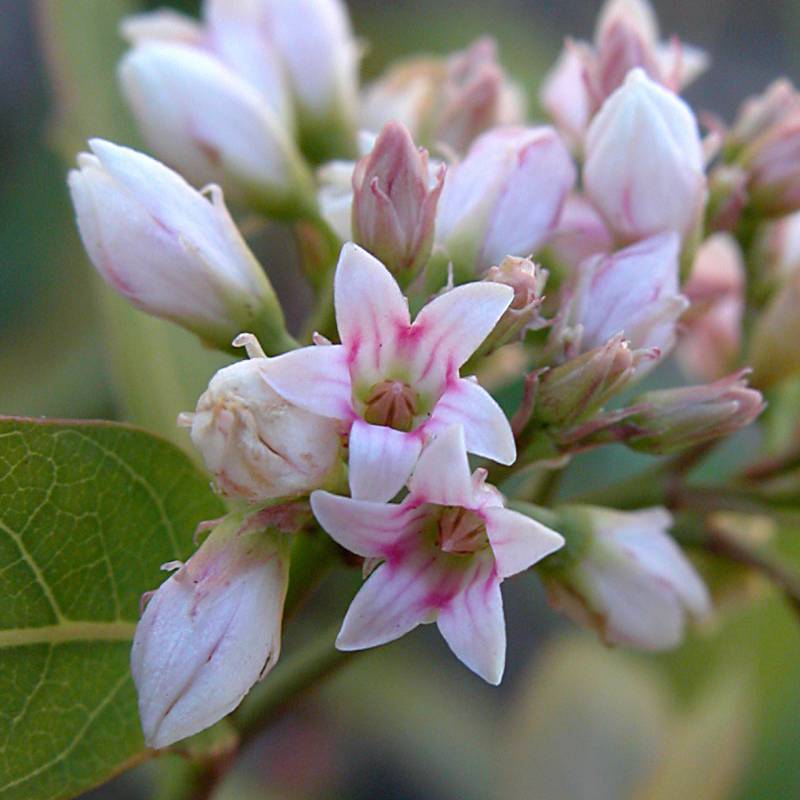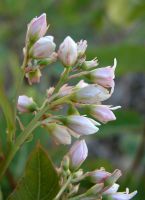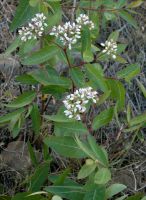Distribution: Occurring on both sides of the Cascades crest in Washington; British Columbia to California, east across North America to the Atlantic Coast.
Habitat: Dry, open areas, gen in valleys and at lower elevations in the mountains.
Flowers: June-September
Origin: Native
Growth Duration: Perennial
Conservation Status: Not of concern
Pollination: Bumblebees, bees, flies, butterflies, beetles, wasps
Perennial herbs with milky juice, the branched stems 2-6 dm. tall, glabrous or pubescent.
Leaves opposite, entire, spreading, sub-sessile to petiolate, ovate-lanceolate to ovate, obtuse to acute at the tip and rounded to cordate at the base, 4-8 cm. long.
Inflorescence of terminal and axillary cymes; calyx divided nearly to the base, the 5 lobes lanceolate, about as long as the corolla tube; corolla 4.5-6 mm. long, bell-shaped, pinkish, the 5 lobes spreading; there are triangular, awl-shaped appendages alternate with the bases of the 5 stamens in the corolla tube; style very short, enlarged; ovary superior.
Follicles 2, elongate, 7-14 cm. long, pendulous.
Publication: Erythea 1(7): 151. 1893.
PNW Herbaria: Specimen records of Apocynum ×floribundum in the Consortium of Pacific Northwest Herbaria database.
WA Flora Checklist: Apocynum ×floribundum checklist entry.
OregonFlora: Apocynum ×floribundum information.
E-Flora BC: Apocynum ×floribundum atlas page.
CalPhotos: Apocynum ×floribundum photos.
USDA Plants: Apocynum ×floribundum information.






